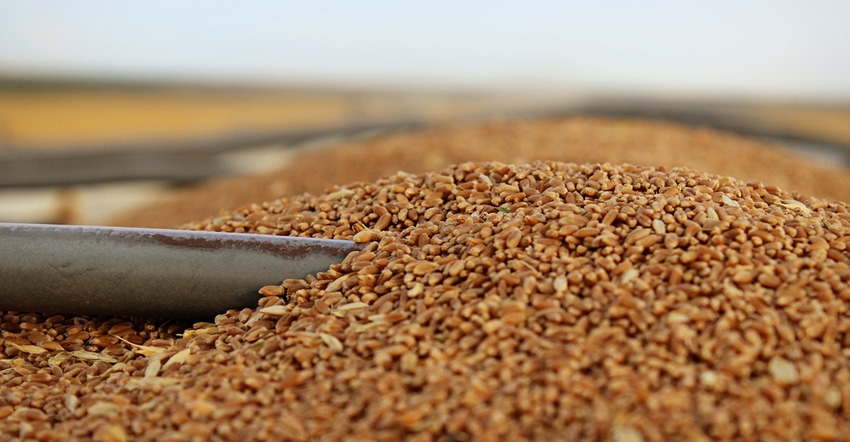July 1, 2022

It's no secret that I love wheat.
I love how green and lush a wheat field looks after a spring rain, with droplets gathering on flag leaves. I love seeing cheery red ladybugs get fat off nasty yield-robbing aphids. I love the sound Kansas wind makes blowing through a golden ripe wheat field in June.
But I really love how a bushel of Kansas wheat can feed hungry people, here or around the globe.
Challenging harvest
As Kansas farmers fired up the combines and grain carts for harvest this year, I know some did it with a pit in their stomachs. Drought robbed us of yields, and many were probably asking themselves if it was worth the high diesel prices to get what was out there into the bin.
But after listening to Antonina Broyaka, visiting professor of ag economics at Kansas State University, describe the challenges her Ukrainian countrymen are facing as they start their wheat harvest, I had a different perspective.
You see, Broyaka, the dean of the agricultural economics department at Vinnytsia National Agrarian University in Ukraine, packed up her two children in March and returned to Manhattan, Kan., where 20 years ago she was a Fulbright scholar studying ag economics at K-State. And today she’s using her knowledge to share Ukrainian agriculture’s story with the world.
It’s a gut-wrenching story.
We talk a lot about soil health and conservation here in the U.S. I know farmers who have spent 20 years or more building up the organic matter in their soils and practicing conservation tillage to reclaim the land.
Now picture yourself as a Ukrainian farmer, with bomb craters devastating your carefully managed fields, disrupting your lifetime of work.
We’ve had to walk fields after tornadoes to clear debris before combines and equipment can get into them. Now imagine a field with unexploded ordinance and pieces of missiles — or worse, land mines.
We know what damaging winds can do to our irrigation equipment and our grain storage. But have you seen what an invading army does to farming infrastructure?
Bushel of hope
I think what’s been eating at my gut these past four months of Russia’s invasion of Ukraine is that these are people who have so much in common with my Kansas farmer friends. Immigrants from that region brought hard red winter wheat to Kansas in the 1800s, establishing our own wheat industry. Heck, some of you may trace your ancestry back to these farmers who are growing wheat there today.
Like us, they farm not just for the Ukrainian market, but for the export market as well. And their wheat and grains go to countries that can’t really weather a great disruption in the food pipeline without massive social strife.
I think about those people a lot. The mothers who will struggle to feed their hungry children now.
And as I walked into my friend Justin Knopf’s wheat field to watch him harvest his crop this year, I thought about how critical his work is this year for those hungry people. More than ever, what he’s doing — what all of you are doing — is needed by the world.
Until our Ukrainian friends can return to normal production, we’re going to need to step up and use every tool in the toolbox to grow as much as we can, as efficiently as we can. It’s going to take a support team of our public and private researchers, our agribusinesses and our community leaders to make it happen.
Someday Ukrainian farmers won’t have to farm around bomb craters and haul off burned Russian tanks before they can enter a field to plant their crops. Someday professor Broyaka will be able to return home with her children. Someday, there will be a return to normal wheat and grain stocks for the world market, and we can return to weather being our chief concern regarding supply.
Until then, we can help by harvesting hope for the world, one bushel of Kansas wheat at a time.
You May Also Like




